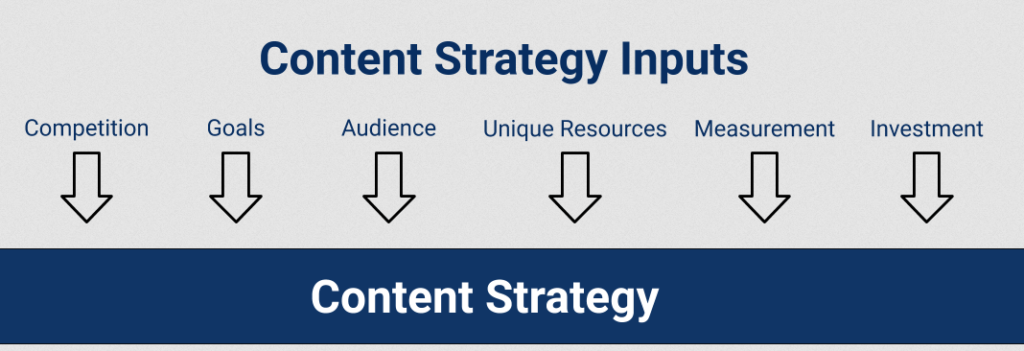1) Define Your Intention: Every business has a different set of goals. Consider the following to figure out your business objectives.
–> What you do?
–> Why you do what you do?
–> The Customer Pain Points You Address.
–> How your content marketing strategy can help solve problems better?
2) Know Your Target Audience: You can produce and upgrade content to engage your target audience. Identify your prospects and segregate them based on buyer personas. This way, you can understand better what their individual challenges are and create content that addresses the same.
3) Build Your Brand Voice: You aren’t the only one offering a particular product or service in the market. You certainly have competitors. Creating a unique voice for your brand is important to make it stand out from the crowd. Make sure your content speaks to your likelihood on behalf of your brand.
4) Document Your Content Strategy: If you are not keeping records of your content marketing strategy, you are missing out on something big. Documenting your content strategy helps you to get a bigger picture of what you do. You can also use the records to refine your strategy in the days to come.

5) Promote on Multiple Channels: Content promotion on different channels means a wider reach for your content and your brand naturally. Use social media platforms like Facebook, Twitter and Instagram to promote your content. Also, leverage email marketing, display ads and more for a greater reach.
6) Measure Your Content Strategy: Creating a content strategy is not the end. You need to measure it based on lead generation, traction, sales and more. That’s how you get to know how successful your strategy is. Based on the metrics, you can revisit your strategy to achieve your KPIs.
7) Test Your Campaigns: The next step is to test your campaigns for performance using A/B testing or split testing.
Here you run two versions of your content simultaneously with one variation in terms of heading, image, CTA button or others. This helps you figure out which version performs well and use it to your advantage.
8) Optimize Your Content: Content creation isn’t a one-time process. You refresh it now and then to interact better with your prospects. The content optimization may be anything from keyword inclusion to adding more content to an existing write-up to create an improved version.
9) Repurpose Your Content: You can repurpose your content in different forms like social media posts, blogs, mailers, e-books and more as per your marketing needs. If done right, content repurposing can fetch more opportunities your way. Ensure you avoid content duplication.







